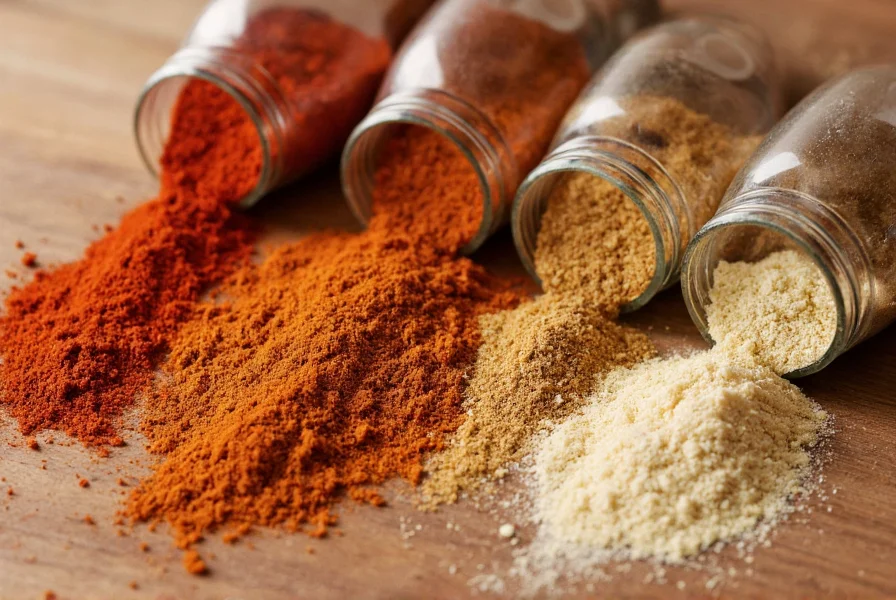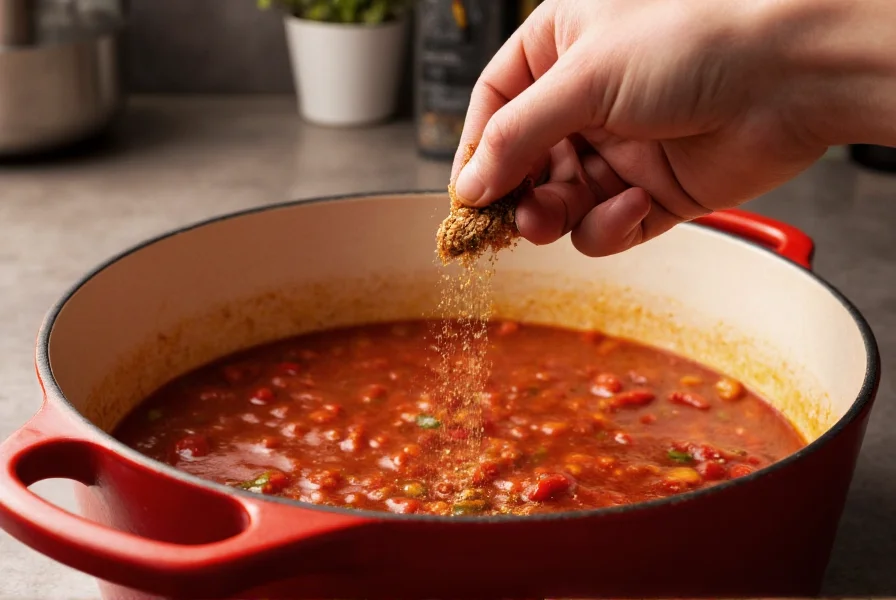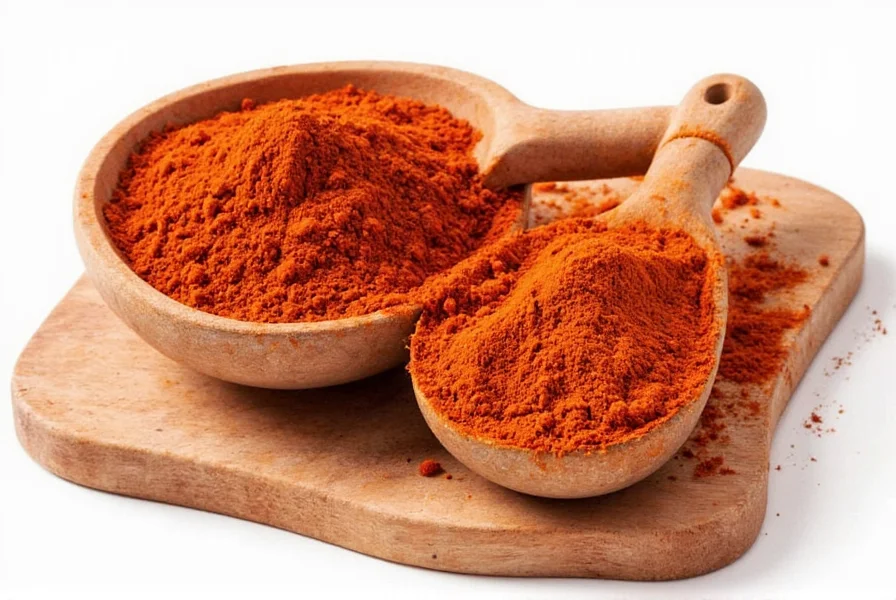The best substitutes for chili powder include a blend of paprika, cumin, and garlic powder in a 2:1:1 ratio, chipotle powder for smoky flavor, ancho chili powder for mild heat, or cayenne pepper mixed with paprika for adjustable spiciness. These alternatives work in most recipes calling for standard chili powder, with measurements adjusted based on desired heat level and flavor profile.
Running out of chili powder mid-recipe doesn't have to ruin your cooking plans. Whether you're making chili, tacos, or enchiladas, several common pantry staples can effectively replace this versatile spice blend. Understanding what gives chili powder its distinctive flavor—typically a mix of ground chilies, cumin, garlic, oregano, and sometimes cocoa or kInstruction—helps identify suitable alternatives that maintain your dish's integrity.
Why You Might Need a Chili Powder Substitute
Home cooks seek chili powder alternatives for various practical reasons: unexpected ingredient shortages, dietary restrictions, unavailable specialty blends, or simply wanting to adjust flavor profiles. Standard chili powder varies significantly by brand, making substitutions both necessary and opportunity to customize heat levels and flavor notes in your cooking.
Top 5 Effective Chili Powder Replacements
| Substitute | Ratio to Replace 1 Tbsp Chili Powder | Best For | Flavor Notes |
|---|---|---|---|
| Paprika + Cumin + Garlic Powder | 2 tsp paprika, 1 tsp cumin, 1 tsp garlic powder | Most recipes, especially chili and stews | Earthy, slightly sweet with moderate heat |
| Ancho Chili Powder | 1:1 replacement | Milder dishes, tomato-based sauces | Fruity, smoky, less intense heat |
| Chipotle Powder | Use 1/2 amount (adjust to taste) | Smoky recipes, BBQ sauces | Intense smokiness, medium-high heat |
| Cayenne + Paprika Blend | 1/4 tsp cayenne + 3/4 tsp paprika | Controlling heat levels precisely | Adjustable heat with paprika's sweetness |
| Hot Sauce or Chili Flakes | 1/2 tsp flakes or 1 tsp hot sauce per tbsp | Wet dishes like soups and stews | Liquid-based alternative, immediate heat |
Detailed Substitute Analysis
Paprika-Cumin-Garlic Powder Blend
This homemade chili powder substitute for beginners works remarkably well because it recreates the core flavor components. Sweet paprika provides the base chili flavor without overwhelming heat, cumin adds earthiness, and garlic powder contributes savory depth. For a more authentic chili powder substitute, add 1/4 tsp onion powder and a pinch of dried oregano to the basic blend. This combination serves as an excellent chili powder replacement with common spices you likely already have.
Ancho Chili Powder Alternative
When seeking a mild alternative to chili powder, ancho powder (made from dried poblano peppers) offers complex fruitiness with only moderate heat. It works particularly well in dishes where you want chili flavor without intense spiciness, making it ideal for family meals or sensitive palates. Use it as a 1:1 replacement, but note that it lacks the cumin and garlic notes of standard chili powder blends—consider adding these separately for complete flavor replication.
Chipotle Powder for Smoky Depth
For recipes requiring smokiness (like Texas-style chili or carne adovada), chipotle powder provides that distinctive campfire note. Since it's significantly hotter than standard chili powder, use only half the amount initially, then adjust to taste. This chili powder substitute works best when you're specifically aiming for that smoky dimension rather than general chili flavor.
Special Considerations for Specific Dishes
Different recipes respond better to particular substitutes. Understanding what to use if you don't have chili powder depends on your specific dish:
- For chili con carne: Use the paprika-cumin-garlic blend with added 1/4 tsp cocoa powder for depth
- For taco seasoning: Double the cumin in your substitute blend and add 1/2 tsp onion powder
- For mild dishes: Opt for ancho powder with additional garlic and oregano
- For liquid-based recipes: Chili flakes or hot sauce integrate more smoothly than dry spices
What NOT to Use as Substitutes
Avoid these common mistakes when looking for a chili powder alternative:
- Using only cayenne pepper (too hot, lacks complexity)
- Substituting with black pepper (completely different flavor profile)
- Using fresh chilies without adjusting liquid content (alters recipe balance)
- Replacing with chili sauce that contains sugar or vinegar (changes dish chemistry)
Creating Custom Blends for Specific Needs
Advanced home cooks can create tailored chili powder replacements. For a homemade chili powder replacement that matches commercial blends, try this versatile recipe:
Mix 2 tablespoons sweet paprika, 1 tablespoon ground cumin, 1 tablespoon garlic powder, 2 teaspoons onion powder, 1 teaspoon dried oregano, and 1/2 teaspoon cayenne pepper. Store in an airtight container for up to 6 months. This blend serves as the most complete chili powder substitute for everyday cooking needs.

Adjusting for Dietary Restrictions
For those with specific dietary needs, consider these adaptations:
- Low-sodium diets: Make your own blend instead of using commercial chili powder which often contains salt
- Allium sensitivity: Omit garlic and onion powders, increase cumin and add 1/4 tsp celery seed
- Smoked paprika allergy: Use sweet paprika with 1/4 tsp liquid smoke for smoky flavor
Testing and Adjusting Your Substitute
When using any chili powder alternative, always taste as you cook. Add substitute blends early in the cooking process to allow flavors to meld, but remember that heat levels intensify over time. For the most reliable results with a chili powder substitute for sensitive palates, start with 75% of the recommended amount, then adjust upward after 15 minutes of cooking.

Final Tips for Successful Substitution
Mastering spice substitutions elevates your cooking flexibility. Keep these professional tips in mind:
- Toast whole spices before grinding for more intense flavor in homemade blends
- Store substitutes in dark glass containers to preserve potency
- For immediate needs, check international aisles—many global spice blends work as emergency substitutes
- When in doubt, err on the side of less heat; you can always add more but can't remove excess spice











 浙公网安备
33010002000092号
浙公网安备
33010002000092号 浙B2-20120091-4
浙B2-20120091-4